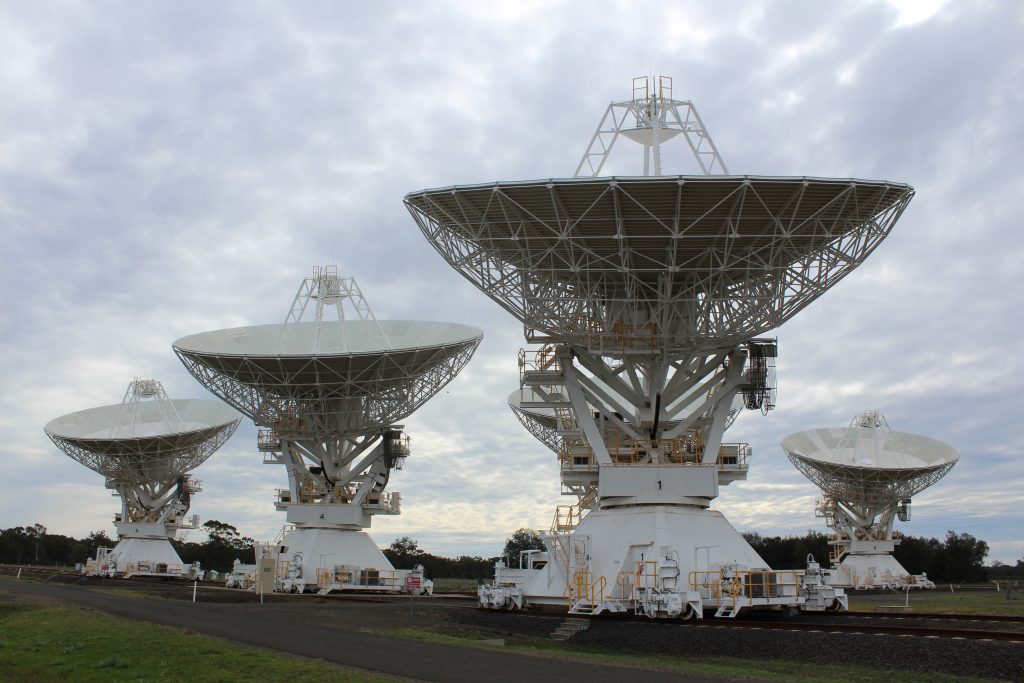Blog: The digital revolution has brought a new era to radio astronomy
Dr. Keith Vanderlinde discusses the evolution of radio telescope design

By Adam A. Lam
Why do radio telescopes look drastically different from optical telescopes? The answer, according to Dr. Keith Vanderlinde, is largely due to the large wavelengths of radio waves that these telescopes are designed to detect.
Dr. Vanderlinde—Associate Professor at the David A. Dunlap Department of Astronomy & Astrophysics and the Dunlap Institute—explored the design of radio telescopes and the future of radio astronomy at his October Star Talk with the Astronomy & Space Exploration Society.
Radio telescopes have typically appeared as massive structures of an antenna fixed to a parabolic dish. “There are two reasons that we make larger and larger telescopes,” he explained. “One is just to make a larger light bucket.” The larger surface area of the telescope’s dish, he continued, increases the sensitivity of the instrument.
The second reason stems from the challenge faced by radio telescopes in capturing images with high enough optical resolution. Resolution—the shortest length between two separate points in an image—is dependent on the colour (wavelength) of light (electromagnetic radiation) under observation, noted Dr. Vanderlinde.
The key measure of resolution, explained Dr. Vanderlinde, is the size of the “collecting area… in units of wavelengths.” Since radio waves have the longest wavelengths across the electromagnetic spectrum, he noted, radio telescopes must be built to large sizes for reasonable resolution.
This is why the Green Bank Telescope—a radio telescope 100 metres wide—still has a resolution around 20 times worse than the human eye, explained Dr. Vanderlinde. Historically, he added, the large size of radio telescopes have made the instruments vulnerable during natural disasters. Increased telescope size is also limited by prohibitive cost, he continued, along with physical space limitations.
In the 2000s, scientists and engineers began to address this challenge by designing aperture arrays. In this type of radio telescope, Dr. Vanderlinde explained, the integration of additional radio detectors boosts the instrument’s sensitivity as if the surface area of the telescope’s dish has increased. Contemporary radio telescopes, he noted, continue to harness the advantages of adding detectors in order to increase image resolution. This has made radio astronomy increasingly affordable.
“Previously, all the cost was in steel, [and] steel has been pretty stable in price,” he said. “Electronics are not stable in price; they drop drastically. If you can’t afford your telescope today, wait 18 months and it’ll cost half as much. If you can’t afford it, then wait another year and a half, and will be a quarter what it originally was.”
He continued: “Within a fairly small amount of time, you can afford to do almost anything. Because of this sort of digital revolution that we’re living in.”
—To learn more about the physics behind radio astronomy, along with the impact of consumer technology on radio astronomy, you can watch our recording of Dr. Vanderlinde’s Star Talk on the ASX Society’s YouTube Channel.


